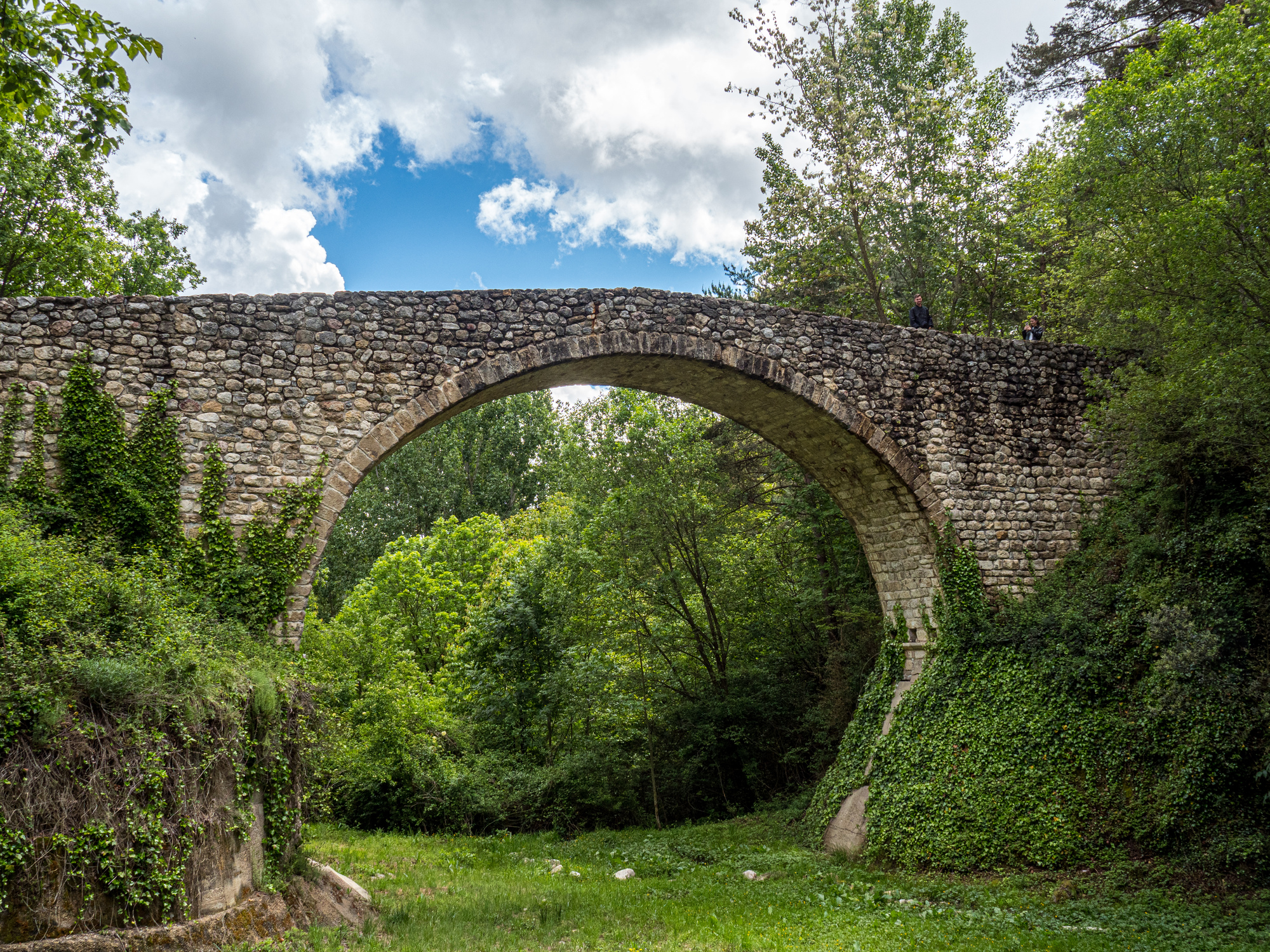May 20, 2024
In Sant Llorenç de Morunys
A much-needed rest day today. It’s a lot easier taking a rest day and actually resting when you’re in a town with not much to tempt you. We had the hotel’s mediocre breakfast (not bad, but it could have been so much better), walked around a bit, sat in a park, picked up groceries for breakfast in our room tomorrow, walked around a bit more, sat in another park, read for awhile, had a good lunch, followed by a siesta…. The weather was actually better than expected, but there was a cloudburst sometime in the late afternoon while we napped.
We visited the Monastir de Sant Llorenç de Morunys first; there was a wedding recently, judging by the confetti around the door.
From the results of an online search:
“In its beginnings, around the year 885, a few clerics, perhaps Mozarabs, built a first church to re-Christianize the Vall de Lord. In 1071, there is already talk of a Benedictine monastery, annexed (1025) to the monastery of Tavernoles. The prosperity of the 13th century made it possible to establish the town around the monastery. The wool fabrics known as the "Piteu cloth" had given their name to the town. Among the brotherhoods, the lay brotherhood of the Hills (1343) should be highlighted. When the bishopric of Solsona was created, the priory was abolished and its income went to the miter of the bishopric. The church is one of the most well-finished examples of Catalan Romanesque. The apse on the right houses the chapel of Our Lady of the Hills, a marvel of the late Baroque. It has an austere 16th century cloister and an interesting recently restored organ. It has the Sanctuary of Our Lady of Lord, of great devotion in the region, where a small community lives.”
We are staying in Hotel Piteus, and the name Piteus seems used by other businesses as well. Piteu is “Ordinary cloth, white, black or blue, which was manufactured in Sant Llorenç de Morunys or Piteus (Solsonès), and which was mainly used to make booties, shepherd's cloaks and porter's blankets.”

| Heart | 1 | Comment | 0 | Link |

| Heart | 2 | Comment | 0 | Link |

| Heart | 1 | Comment | 0 | Link |

| Heart | 2 | Comment | 0 | Link |

| Heart | 1 | Comment | 0 | Link |
On a later walk, we went to see the Roman bridge after seeing it noted among the things to see here. “Roman” refers to the shape of the arch as I don’t think it was actually built by the Romans.

| Heart | 1 | Comment | 0 | Link |
The bridge was actually built in the 12th or 13th century across the Cardener River and was part of the salt road. Salt mined near Cardona was transported north for sale. When the reservoir of La Llosa del Cavall was built, the area around the bridge was to be flooded so the bridge was dismantled and rebuilt just outside San5 Llorenç in 1997.
| Rate this entry's writing | Heart | 7 |
| Comment on this entry | Comment | 0 |





